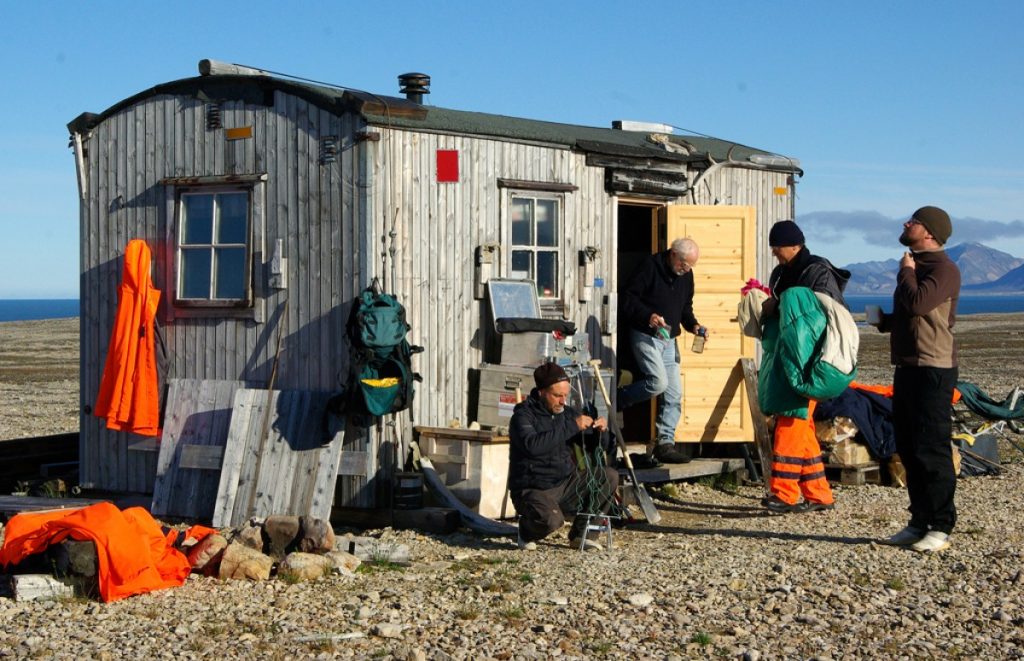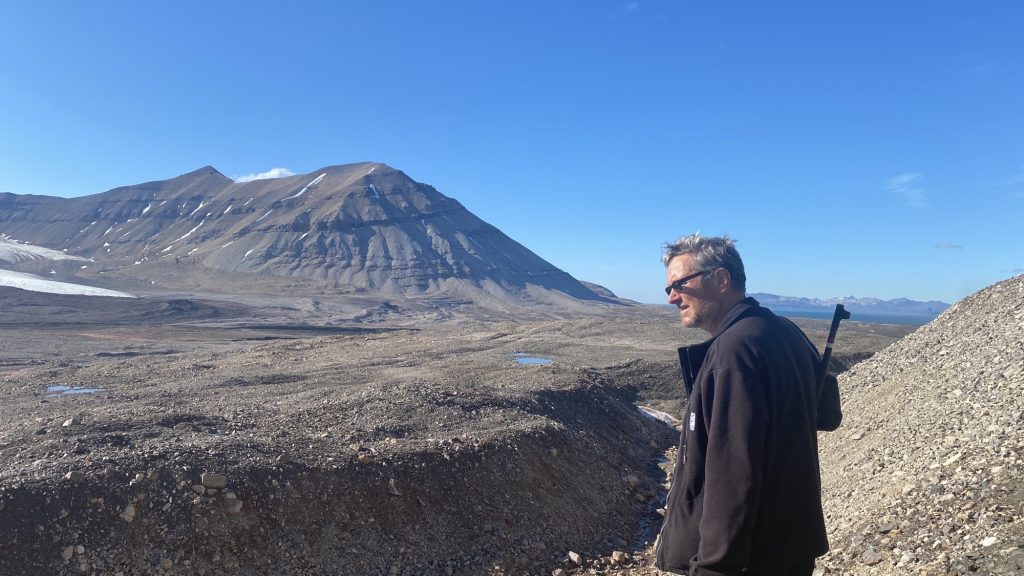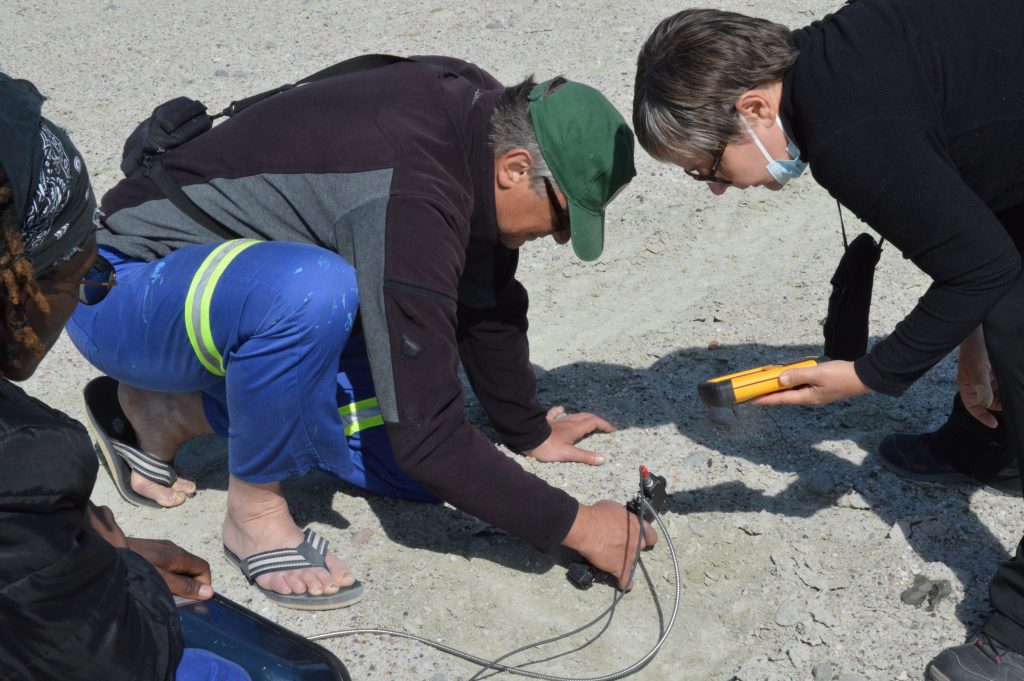He splits his time between field trips to Antarctica and Botswana, analysing data from spacecraft orbiting other planets. His office is a cascade of papers fighting for space on the shelves. Ernst treasures his files – among them, more than 150 peer-reviewed papers published on terrestrial planets – as much as he loves looking for answers on the ground.
“I always had a kick for being outdoors. I was not one of those kids who stared at the stars and wanted to become an astronomer or an astronaut. When I finished school, geology seemed like the right thing for me,” he explains.

After starting out with field expeditions looking for rocks, soon enough his research focused on the evolution of planetary surfaces. Ernst used satellite data to monitor volcanism and tectonics, as well as changes on sedimentary and glacial terrains.
All terrestrial planets and some icy moons show evidence of volcanism and tectonism, but there was one that attracted him in its diversity.
Mars diversity
Ernst could have chosen the Moon and Venus for his geology research, but then Mars stood out. “When it comes to variety, Mars has everything to study water, ice, wind, glaciers, dunes… I chose Mars because it shows a lot of those processes acting on the surface that could be tracked from orbit,” he explains.
He has kept a close eye on all the images coming from Mars for nearly two decades. This orbital scrutiny of the Red Planet started in 2004, when Ernst began leading the image planning for ESA’s Mars Express mission. The spacecraft’s High Resolution Stereo Camera has now mappedalmost 100% of the planet’s surface, an essential piece of information in the selection of landing sites for NASA’s Perseverance and ESA’s Rosalind Franklin rovers.
We talked to Ernst because he is a member of the Mars Sample Return Campaign Science Group, a selected group of earthlings who work to optimise the science from the martian samples that are expected to land on Earth in the 2030s.
“Returning samples from another planet is one of the most important things I could dream of in planetary science. We need those samples back to run detailed analysis and have the whole picture,” he says.

Ernst is confident that each sample would provide new knowledge and raise new questions. “Our job at the moment is making sure that we don’t disregard anything, because there is always the chance that we could miss a fantastic sample and we don’t want to regret it later,” he explains.
Even before the samples come to Earth, there is a wealth of information scientists need to gather and process about their location and context.

During his career at the German Aerospace Center (DLR) Institute of Planetary Research, Ernst has become one of the top planetary archivists in the world and learned how to organise information for context – or metadata – and to help setting up the best conditions for curated samples.
“I am not specialised in samples and laboratory procedures, but I bring a good orbital perspective of the planet for the team. I hope my experience in archiving data and merging the information from orbital and rover instruments will be of use for the Mars Sample Return campaign,” he says.
Mars on Earth
The roots of his knowledge are still on Earth. “What we learn about Earth is the basis of our working hypotheses for Mars and other planets. A geologist should not sit behind the computer all the time. We need to keep in contact with the real thing, out in the field,” he says.

Ernst uses environments on Earth as metaphors for Mars. He goes to places with permanently frozen ground, or permafrost, such as Norway, Iceland, or Antarctica. There he and his team study how the morphology of the terrain changes as a model of what might have happened in the frozen martian lands.
They way scientists measure changes on Earth can be applied to Mars. In Svalbard, Norway, they used kites for aerial views, time lapse cameras, lasers, and ground penetrating radars. Beyond planetary studies, his research is useful to track climate change. “Over the last 12 years, we have recorded dramatic changes. The Arctic is heavily affected by climate change,” he warns.

From glacial locations Ernst travelled to several scorching deserts in Africa. Last summer he visited the largest salt pan in the world, the Makgadikgadi Pans in Botswana to study how muddy and salty environments can be prerequisites for life as we know it. Ernst collected samples and used a spectrometer to analyse sediments. The resulting mineral maps were compared to a recent Mars water map based on mineralogical findings from orbit.

For all the passion he has for the Red Planet, Ernst does not want to be called a Mars scientist. “I would rather like to be called a geologist who specialises on certain planetary aspects. I still love Mars, but otherplanets have joined. The next big thing for us will be Mercury with the BepiColombo mission,” he concludes.

Discussion: no comments